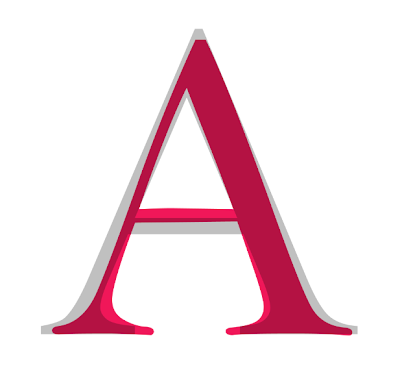Characteristics of this typeface are:
lower case: double storey a and g
upper case: dropped horizontal element on A, Tail on Q
other: tear drop terminal, softened edge, closed tail,
History
Bell wanted a sharply serifed face, like Didot in its contrast of thick and thin strokes, but more like Baskerville in its use of bracketed, less rectilinear, serifs. The result was the first Scotch Roman face, later described by Stanley Morrison as the first English modern typeface. After Bell's foundry was closed, the matrices came into the possession of Stephenson Blake.
The initial success of the face was short lived however, as the introduction of lithography at the beginning of the nineteenth century caused taste in typefaces to change dramatically. Thus, while Bell's type was seldom seen after 1800 in England, it went on to be come a favorite in the United States. When the Boston publisher Henry Houghton went to Europe to purchace type for his Riverside Press he selected Bell. Back in Boston the face was called copperplate.
The face should not be confused with the sans-serif typefaces Bell Gothic and Bell Contennial developed for AT&T, which are not related.
Here, I have compared the typeface to Times New Roman to see the subtle differences in characteristics. The Times New Roman is in grey and Bell is overlaid in the pink colour.
Key Characteristics
Key Characteristics
When looking at the lower case 'a', we can see that both typefaces again like the 'g' are double storey. Both typefaces have a softed tear drop terminal at the top but at the the bottom, Bell has more of a unrefined
When looking at the lower case 'a' and 'g' you can see that both Bell Mt and Times New Roman are double storey with a closed tail. As you can see the Terminal at the top of the 'g' on Bell is more of a softened tear drop lobe where as Times is blunt and straight across. This is the same at the baseline terminal of the 'a'.
When looking at the Terminals of Bell MT, you can see that they are tapered serifs, which is the same as Times but in Bell's case, they appear unrefined as appose to the sharp, more refined serif's of Times. The crossbar also looks less refined than that of Times and has also been dropped slightly.
This is the most distinctive letter in the typeface. The ‘Q’ breaks the conventions of the traditional straight tail in a serif, as you can see, compared to Times New Roman above. There are no breaks in the elements of the ‘Q’ and the difference between the thickest and thinnest strokes is high.
Double Page Spread
I then went out to lay out my DPS. I wanted to keep it simple, but contain the references and comparisons of Bell Mt and Times New Roman. I also wanted to emphasise the 'Q' in particular because this was the most distinctive letter in the typeface. I kept the information gathered neatly at the bottom of the page whilst keeping a straight layout across both pages. I experimented with a couple of variations but found that this simple layout worked the best in the end.
I was restricted to black and white, so used the 30% grey to represent the comparisons of the Bell MT typeface with Times New Roman.









Leave your comment